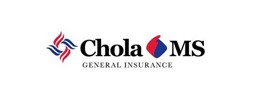Last updated on: September 19, 2025
Critical illness health insurance in India provides a lump-sum payout if the policyholder is diagnosed with a specified serious illness such as cancer, heart attack, or stroke, as listed in the policy. Unlike regular health insurance, which covers hospitalization costs, critical illness plans focus on providing financial support to cover high treatment expenses, loss of income, or lifestyle changes during recovery. The lump-sum amount can be used at the policyholder’s discretion, ensuring greater flexibility in managing medical and household expenses during critical times. Popular insurance providers in India offer customizable plans catering to various needs and illnesses, and premiums typically depend on factors like age, coverage amount, and medical history. Having a critical illness policy is especially recommended amid rising lifestyle diseases and expensive treatments, supplementing standard health insurance for better financial security.
Critical illness health insurance India is a bespoke cover in that it provides the lump sum payout in case the policy holder is diagnosed with a specified disease that is critical in nature. The kinds of life changing diseases that are covered by such policies include cancer, heart attack, stroke and kidney failures among others. With the cost of medical care increasing on a yearly basis, this form of insurance cushions families against the adverse financial impact of the high costs and prolonged recovery rates in these treatments.
Treatment of such fatal diseases has elevated steeply in India during the past couple of years. As an illustration, cancer treatment in the contemporary world ranges between 5 lakh and 25 lakh in private hospitals. The common mediclaim types may provide coverage on the hospitalization bills but would not necessarily cover post-treatment recovery cost, the loss of income, or other expenses which would not be incurred in a hospital setup. It is here that an additional critical illness cover will come in handy.
Families that have already gone through the financial pressure of such diseases commonly narrate the experiences of getting a separate critical illness policy that enabled them to easily keep up their quality of life through their hard times. As the lifestyle disease burden of people is increasing and cost of treatment is increasing in India, more people are considering such plans as an important component of their financial planning.
Treatment of serious conditions is also very expensive not only involving hospitalization and medication but also post-rehabilitation, home supports and travel among others in addition to reduction in earnings of handling long leave of work. In case of most of the middle class Indian families, the only way is to borrow, utilize savings, or even sell assets/property.
Critical illness cover is a type of insurance that would pay specified amount at the time of diagnosis disregarding the price of treatment. This aids the policyholders:
It is a payout even when you have already an existing traditional mediclaim policy. The flexibility and security comes in the ability to use the funds as you require.
The list should vary among the insurers, but these are the most usual ones. More conditions are also being covered by latest policies in 2025 including some stages of illness such as early-stage disease.
Interesting Did You Know?
The Association of healthcare providers India suggests that out-of-pocket spending contributes to half of the total health spending up to 57 percent in the rural as well as urban India. Critical illness policies can significantly assist in taking some load off of a family.
A major Indian insurance companies either provide this individual critical illness insurance as a rider to the health or life insurance. The major features are:
Is it a cover only for the older ones to worry about or is it one of the things to look at as a young professional?
Critical illness insurance is worthwhile to:
Case Study:
Manish, aged 32 and a resident of Bengaluru, is an IT professional and he purchased a 20 Lakh critical illness policy as an uncle of his was affected by heart condition. On diagnosis of kidney failure two years down the line, the pay out helped him in treatment and he could ensure his home loan EMI was taken care of smoothly.
When buying, compare:
Premium factors:
Example:
A person who is 30 years old with no history of smoking and a ₹10 lakh cover will pay minimal amount of premium per annual cover as compared to a 45 year old smoker purchasing the same coverage.
People also Ask:
Does one need a medical check up before purchasing critical illness insurance?
In most cases, insurers would insist you undergo a medical check up when you exceed a particular age or you want to cover a high sum insured.
| Feature | Plan A (Insurer 1) | Plan B (Insurer 2) | Plan C (Insurer 3) |
|---|---|---|---|
| Base Premium (₹20 lakh, 35yrs) | 3,000 per year | 3,200 per year | 2,900 per year |
| Diseases covered | 20 | 32 | 25 |
| Survival Period | 14 days | 30 days | 15 days |
| Claim Processing time | 10 days | 7 days | 12 days |
| Online Purchase | Yes | Yes | Yes |
| Add on Covers | Yes | Yes | No |
| Renewability | Life long | Till the age of 65 years | Lifelong |
Did You Know?
WHO estimates India’s non-communicable disease burden will be over 13% of global burden by 2030 — making personal protection plans essential.
| Critical Illness Insurance | Mediclaim Insurance |
|---|---|
| Pays lump sum on diagnosis | Pays actual hospital bills, up to sum insured |
| One-time claim | Repeated until sum insured is reached |
| Funds usable for any purpose | Funds only for hospitalization/treatment |
| Covers only listed illnesses | Covers illnesses insurable under policy |
| Waiting period ~90 days | Waiting period ~30 days |
| Premium higher for same sum insured | Premium relatively lower |
Riders are add-on benefits to a basic health/term insurance plan.
Standalone plans come with critical illness riders but often at lower sum insured. Whether to use a rider or standalone policy depends on your risk, family background, and how much your primary policy covers.
Yes. Benefits of online purchase:
People Also Ask:
Is it possible to take out critical illness cover after diagnosis?
Usually no. But some plans pay out for new unrelated illnesses after a disease-free waiting period.
Sangeeta Jain in Pune took a ₹10 lakh critical illness cover in 2022. In 2024, she was diagnosed with breast cancer. The payout was completed within two weeks of submitting documents. The money covered chemotherapy, travel to a bigger city for advanced care, and a nanny for her children.
Premiums are deductible under Section 80D:
How do terminal and critical illness cover differ?
Terminal illness is covered when the condition is deemed fatal within a timeframe, while critical illness is covered upon diagnosis.
What is the average time to have claims paid?
Usually 7–15 working days with complete documents.
Is it possible for NRIs to purchase?
Yes, though medical tests may be required in India or as per insurer rules.
Does buying have any upper age limit?
Typically 18–65 entry, with lifelong renewal in most plans.
Do I buy a rider or an independent plan?
Standalone plans offer larger coverage; riders are for extra small coverage.












How could we improve this article?
Written by Prem Anand, a content writer with over 10+ years of experience in the Banking, Financial Services, and Insurance sectors.
Prem Anand is a seasoned content writer with over 10+ years of experience in the Banking, Financial Services, and Insurance sectors. He has a strong command of industry-specific language and compliance regulations. He specializes in writing insightful blog posts, detailed articles, and content that educates and engages the Indian audience.
The content is prepared by thoroughly researching multiple trustworthy sources such as official websites, financial portals, customer reviews, policy documents and IRDAI guidelines. The goal is to bring accurate and reader-friendly insights.
This content is created to help readers make informed decisions. It aims to simplify complex insurance and finance topics so that you can understand your options clearly and take the right steps with confidence. Every article is written keeping transparency, clarity, and trust in mind.
Based on Google's Helpful Content System, this article emphasizes user value, transparency, and accuracy. It incorporates principles of E-E-A-T (Experience, Expertise, Authoritativeness, Trustworthiness).